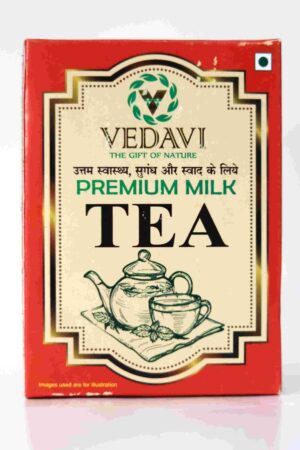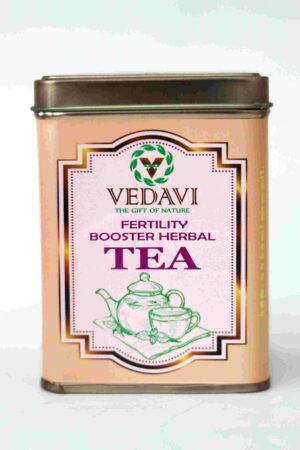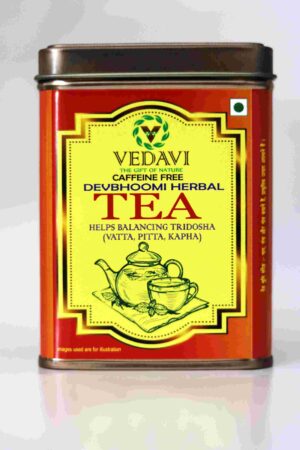'
Devbhoomi Herbal Tea | ||
|---|---|---|
| S.N. | INGREDIENTS | References and Studies on Herbs for Balancing Tridosha (Vata, Pitta, Kapha) |
| 1 | GOOSEBERRY |
Gooseberry (Amla, Emblica officinalis) Amla is known for balancing all three doshas. Its sour taste pacifies Vata, while its cooling energy and sweet post-digestive effect pacify Pitta and Kapha. Book Reference: The Ayurvedic Pharmacopoeia of India Indian Materia Medica by Dr. K.M. Nadkarni Research and Journals: Baliga, M. S., et al. "Phytochemistry, traditional uses and pharmacology of Emblica officinalis (Amla)." Food Research International 44.7 (2011): 1776-1781. Scartezzini, P., & Speroni, E. "Review on some plants of Indian traditional medicine with antioxidant activity." Journal of Ethnopharmacology 71.1-2 (2000): 23-43. |
| 2 | ASHWAGANDHA |
Ashwagandha (Withania somnifera) Ashwagandha balances Vata and Kapha due to its warming nature, but it can aggravate Pitta if used in excess. Book Reference: The Ayurvedic Pharmacopoeia of India Herbs That Heal: Natural Remedies for Good Health by H.K. Bakhru Research and Journals: Singh, N., et al. "Withania somnifera (Ashwagandha): A review." Pharmacognosy Reviews 5.9 (2011): 64-75. Chandrasekhar, K., et al. "A prospective, randomized double-blind, placebo-controlled study of safety and efficacy of a high-concentration full-spectrum extract of Ashwagandha root in reducing stress and anxiety in adults." Indian Journal of Psychological Medicine 34.3 (2012): 255-262. |
| 3 | BACOPA MONNIERI |
Bacopa Monnieri (Brahmi) Bacopa monnieri is known to balance all three doshas. It is particularly effective for calming Vata and Pitta, enhancing cognitive function and reducing stress. Book Reference: The Ayurvedic Pharmacopoeia of India Brahmi: The Ayurvedic Plant for Cognitive Function by Dr. K.M. Nadkarni Research and Journals: Saini, N., et al. "Phytochemistry, traditional uses and pharmacology of Bacopa monnieri (Brahmi)." International Journal of Ayurveda Research 1.1 (2010): 24-30. Stough, C., et al. "Neuropsychological changes after 90-day administration of Brahmi." Neuropsychopharmacology 32.2 (2007): 404-413. |
| 4 | BASIL |
Basil (Ocimum sanctum, Tulsi) Tulsi is known for balancing Vata and Kapha doshas. It has warming properties that can slightly aggravate Pitta. Book Reference: The Ayurvedic Pharmacopoeia of India Herbs That Heal: Natural Remedies for Good Health by H.K. Bakhru Research and Journals: Mondal, S., et al. "Double-blinded, placebo-controlled, randomized, clinical trial to evaluate the efficacy of Holy Basil (Ocimum sanctum) on general stress and sexual health in healthy adults." Journal of Evidence-Based Complementary & Alternative Medicine 16.1 (2011): 151-160. Cohen, M. M. "Tulsi - Ocimum sanctum: A herb for all reasons." Journal of Ayurveda and Integrative Medicine 5.4 (2014): 251-259. |
| 5 | CARDAMOM |
Cardamom (Elettaria cardamomum) Cardamom is tridoshic but especially effective for pacifying Vata and Kapha due to its warming qualities. Book Reference: The Ayurvedic Pharmacopoeia of India Indian Materia Medica by Dr. K.M. Nadkarni Research and Journals: Himesh, S., et al. "Cardamom: Benefits beyond flavour." International Journal of Research in Ayurveda & Pharmacy 1.1 (2010): 47-53. |
| 6 | HIBISCUS |
Hibiscus (Hibiscus rosa-sinensis) Hibiscus balances Pitta and Kapha due to its cooling properties, but it can increase Vata if used excessively. Book Reference: Indian Medicinal Plants by K.R. Kirtikar and B.D. Basu Research and Journals: Ali, B. H., et al. "Some phytochemical, pharmacological and toxicological properties of ginger (Zingiber officinale Roscoe): A review of recent research." Food and Chemical Toxicology 46.2 (2008): 409-420. |
| 7 | TEA LEAVES |
Tea Leaves (Camellia sinensis) Tea leaves have antioxidant properties that can balance all three doshas. Green tea, in particular, is beneficial for Pitta and Kapha. Book Reference: The Ayurvedic Pharmacopoeia of India Research and Journals: Katiyar, S. K. "Green tea and skin cancer: photoimmunology, angiogenesis and DNA repair." Journal of Nutritional Biochemistry 22.3 (2011): 239-246. |
| 8 | CINNAMON |
Cinnamon (Cinnamomum verum)
Cinnamon is warming and primarily balances Kapha and Vata doshas, but it should be used cautiously for Pitta. Book Reference: The Ayurvedic Pharmacopoeia of India Research and Journals: Ranasinghe, P., et al. "Medicinal properties of 'true' cinnamon (Cinnamomum zeylanicum): a systematic review." BMC Complementary and Alternative Medicine 13.1 (2013): 275. |
| 9 | CHAMOMILE |
Chamomile (Matricaria chamomilla)
Chamomile is cooling and primarily balances Pitta and Vata doshas. Book Reference: The Complete German Commission E Monographs: Therapeutic Guide to Herbal Medicines by Mark Blumenthal Research and Journals: Srivastava, J. K., et al. "Chamomile: A herbal medicine of the past with bright future." Molecular Medicine Reports 3.6 (2010): 895-901. |
| 10 | FENNEL |
Fennel (Foeniculum vulgare)
Fennel is tridoshic, but it is especially beneficial for balancing Vata and Pitta doshas due to its cooling effect. Book Reference: The Ayurvedic Pharmacopoeia of India Indian Materia Medica by Dr. K.M. Nadkarni Research and Journals: Rather, L. J., et al. "Foeniculum vulgare: A comprehensive review of its traditional use, phytochemistry, pharmacology, and safety." Arabian Journal of Chemistry 9 (2016): S1574-S1583. |
| 11 | GINGER |
Ginger (Zingiber officinale)
Ginger is warming and particularly balances Kapha and Vata doshas, but it can aggravate Pitta if used in large quantities. Book Reference: The Ayurvedic Pharmacopoeia of India Herbs That Heal: Natural Remedies for Good Health by H.K. Bakhru Research and Journals: Ali, B. H., et al. "Some phytochemical, pharmacological and toxicological properties of ginger (Zingiber officinale Roscoe): A review of recent research." Food and Chemical Toxicology 46.2 (2008): 409-420. |
| 12 | GUDUCHI |
Guduchi (Tinospora cordifolia)
Guduchi is tridoshic, especially effective for balancing Pitta due to its cooling properties. Book Reference: The Ayurvedic Pharmacopoeia of India Research and Journals: Singh, N., et al. "A pharmacological review of natural memory enhancing drugs." International Journal of Pharmaceutical Sciences and Research 2.5 (2011): 1216-1227. |
| 13 | MORINGA |
Moringa (Moringa oleifera)
Moringa is balancing for all three doshas due to its nutritional richness and anti-inflammatory properties. Book Reference: The Miracle Tree: The Multiple Attributes of Moringa by Lowell Fuglie Research and Journals: Tiloke, C., et al. "The antiproliferative effect of Moringa oleifera crude aqueous leaf extract on cancerous human alveolar epithelial cells." BMC Complementary and Alternative Medicine 13.1 (2013): 226. |
| 14 | NETTLE |
Nettle (Urtica dioica)
Nettle is known for its anti-inflammatory properties and ability to balance all three doshas by detoxifying the body and improving circulation. Book Reference: The Yoga of Herbs: An Ayurvedic Guide to Herbal Medicine by Dr. Vasant Lad and David Frawley Research and Journals: Yarnell, E., et al. "Nettle leaf (Urtica dioica): Hormonally active constituents and their use in treating different conditions." Journal of Restorative Medicine 4.1 (2015): 1-14. Chrubasik, J. E., et al. "A comprehensive review on nettle effect and efficacy profiles, part I: Herba urticae." Phytomedicine 14.7-8 (2007): 423-435. |
| 15 | OREGANO |
Oregano (Origanum vulgare)
Oregano is beneficial for reducing Pitta and Kapha doshas due to its warming and drying properties, which aid in digestion and respiratory health. Book Reference: The Complete Book of Ayurvedic Home Remedies by Vasant Lad Research and Journals: Mohammadi, A., et al. "The role of Origanum vulgare in improving gastrointestinal health." Journal of Ethnopharmacology 246 (2020): 112244. Raal, A., et al. "Essential oil composition of Origanum vulgare L. ssp. vulgare growing wild in Estonia." Natural Product Communications 10.7 (2015): 1255-1258. |
| 16 | MINT |
Peppermint (Mentha piperita)
Peppermint is cooling and soothing, making it effective for balancing Pitta dosha and beneficial for digestion. Book Reference: The Complete Book of Ayurvedic Home Remedies by Vasant LadThe Green Pharmacy Herbal Handbook by James A. Duke Research and Journals: McKay, D. L., et al. "A review of the bioactivity and potential health benefits of peppermint tea (Mentha piperita L.)." Phytotherapy Research 20.8 (2006): 619-633. Merker, A., et al. "Phytotherapeutic approaches for gastrointestinal disorders: usage of Mentha piperita." Natural Product Communications 8.2 (2013): 255-258. |
| 17 | ROSE PETALS |
Rose Petals (Rosa damascena)
Rose petals have a cooling effect and are known to balance Pitta dosha, improve skin health, and reduce stress. Book Reference: Ayurvedic Beauty Care: Ageless Techniques to Invoke Natural Beauty by Melanie Sachs Research and Journals: Boskabady, M. H., et al. "Pharmacological effects of Rosa damascena." Iranian Journal of Basic Medical Sciences 14.4 (2011): 295-307. Shafei, M. N., et al. "Anti-depressant and anti-anxiety effects of hydroalcoholic extract of Rosa damascena." Iranian Journal of Pharmaceutical Research 17.3 (2018): 1129-1134. |
| 18 | ROSEMARY |
Rosemary (Rosmarinus officinalis)
Rosemary helps balance Vata and Kapha doshas with its warming properties, improves circulation, and boosts cognitive function. Book Reference: The Complete Guide to Herbal Medicines by Charles W. Fetrow Research and Journals: Peng, Y., et al. "Rosemary (Rosmarinus officinalis L.) leaf extract as a potential anti-inflammatory agent for skin care." Journal of Medicinal Food 17.3 (2014): 289-298. Mahmoud, E. A., et al. "Antioxidant and antimicrobial properties of rosemary (Rosmarinus officinalis, L.) extract, black cumin seeds essential oil, and their combination." International Journal of Food Science and Technology 50.6 (2015): 1517-1526. |
| 19 | RHODODENDRON |
Rhododendron
Rhododendron is known in Ayurveda for its potential in balancing Vata and Kapha doshas, helping with respiratory and digestive health. Book Reference: Medicinal Plants of India by Indian Council of Medical Research Research and Journals: Chauhan, P., et al. "Pharmacological and therapeutic potential of Rhododendron arboreum." Journal of Ethnopharmacology 258 (2020): 112791. Singh, S. P., et al. "Traditional uses, phytochemistry and pharmacology of Rhododendron arboreum: A review." International Journal of Pharmaceutical Sciences Review and Research 23.2 (2013): 51-58. |
| 20 | TURMERIC |
Turmeric (Curcuma longa)
Turmeric is tridoshic, meaning it can balance all three doshas. It has anti-inflammatory, antioxidant, and antimicrobial properties. Book Reference: The Ayurvedic Pharmacopoeia of India Research and Journals: Prasad, S., et al. "Turmeric, the golden spice: from traditional medicine to modern medicine." Advances in Experimental Medicine and Biology 595 (2007): 1-23. Kunnumakkara, A. B., et al. "Curcumin, the golden nutraceutical: multitargeting for multiple chronic diseases." British Journal of Pharmacology 174.11 (2017): 1325-1348. |
| 21 | STEVIA |
Stevia (Stevia rebaudiana)
Stevia has cooling properties that help balance Pitta and Kapha doshas. It is known for its natural sweetness without raising blood sugar levels. Book Reference: The Stevia Story: A Tale of Incredible Sweetness & Intrigue by Linda Bonvie, Bill Bonvie, and Donna Gates Research and Journals: Chatsudthipong, V., et al. "Stevioside and related compounds: Therapeutic benefits beyond sweetness." Pharmacology & Therapeutics 121.1 (2009): 41-54. Goyal, S. K., et al. "Stevia (Stevia rebaudiana) a bio-sweetener: A review." International Journal of Food Sciences and Nutrition 61.1 (2010): 1-10. |
| 22 | LEMONGRASS |
Lemongrass (Cymbopogon citratus)
Lemongrass is useful for balancing Kapha and Pitta doshas due to its warming and stimulating properties. It aids in digestion and detoxification. Book Reference: The Encyclopedia of Medicinal Plants: A Practical Reference Guide to over 550 Key Herbs and Their Medicinal Uses by Andrew Chevallier Research and Journals: Shah, G., et al. "Scientific basis for the therapeutic use of Cymbopogon citratus, stapf (Lemongrass)." Journal of Advanced Pharmaceutical Technology & Research 2.1 (2011): 3-8. Bhargava, S., et al. "Antioxidant and antimicrobial activities of essential oil and extracts of lemon grass (Cymbopogon citratus)." Indian Journal of Pharmaceutical Sciences 72.6 (2010): 739-743. |
Our New Product
-
10% OFF
Sale!

Premium Milk Tea
₹250.00₹225.00 -
1% OFF
Sale!

Devbhoomi Herbal Milk Tea
₹350.00₹345.00 -
10% OFF
Sale!

Refreshment Herbal Tea
₹650.00₹585.00 -
10% OFF
Sale!

Detox Herbal Tea
₹650.00₹585.00 -
2% OFF
Sale!

Slim-Fit Herbal Tea
₹650.00₹635.00 -
10% OFF
Sale!

Anti Aging Herbal Tea
₹650.00₹585.00 -
2% OFF
Sale!

Diabetic Control Herbal Tea
₹650.00₹635.00 -
2% OFF
Sale!

Improve Digestion Herbal Tea
₹650.00₹635.00 -
10% OFF
Sale!

Fertility Booster Herbal Tea
₹650.00₹585.00 -
10% OFF
Sale!

Hair Health Care Herbal Tea
₹650.00₹585.00 -
10% OFF
Sale!

Skin Care Herbal Tea
₹650.00₹585.00 -
2% OFF
Sale!

Heart Care Herbal Tea
₹650.00₹635.00 -
2% OFF
Sale!

Devbhoomi Herbal Tea
₹650.00₹635.00 -
2% OFF
Sale!

Devbhoomi Herbal Tea (Caffeine Free)
₹650.00₹635.00
